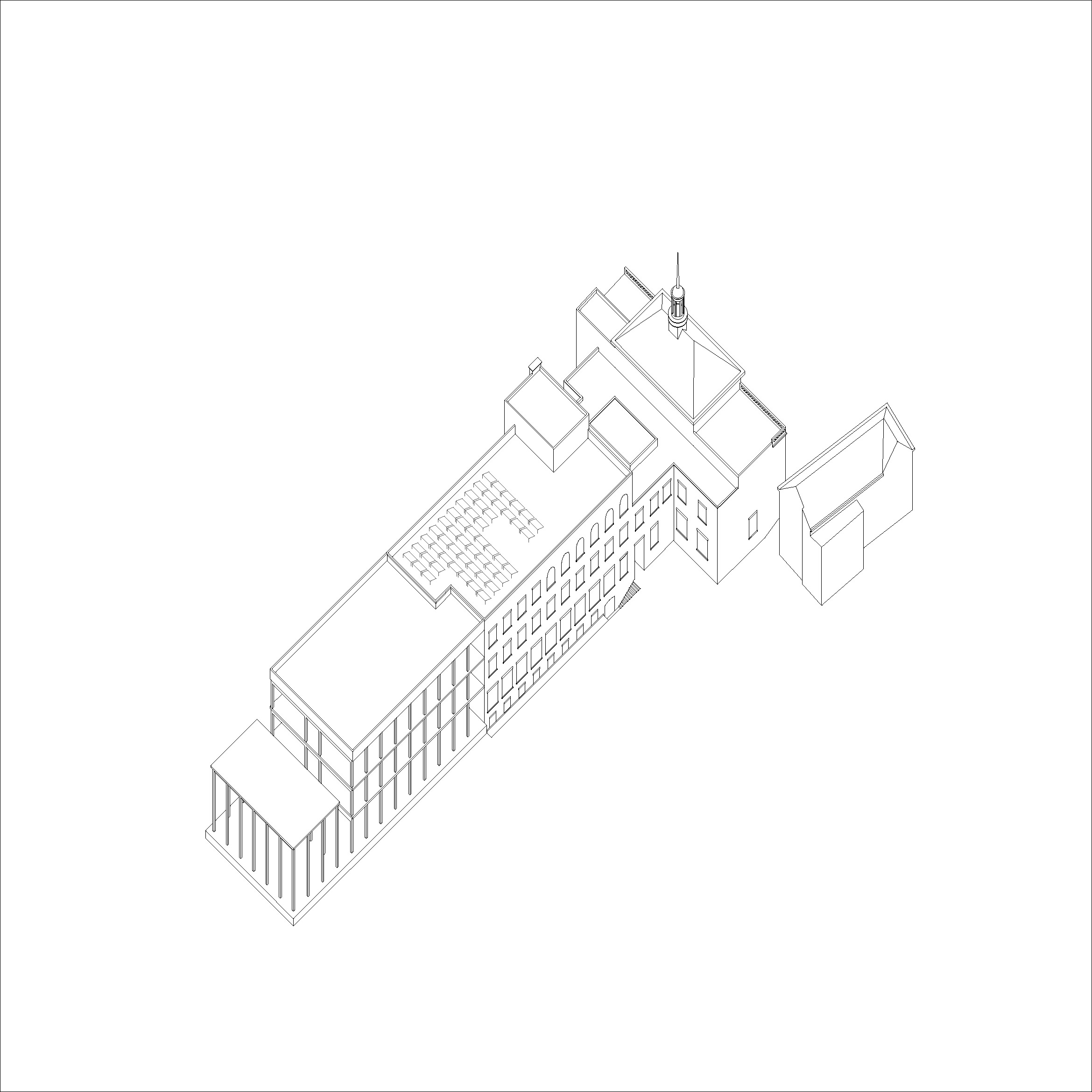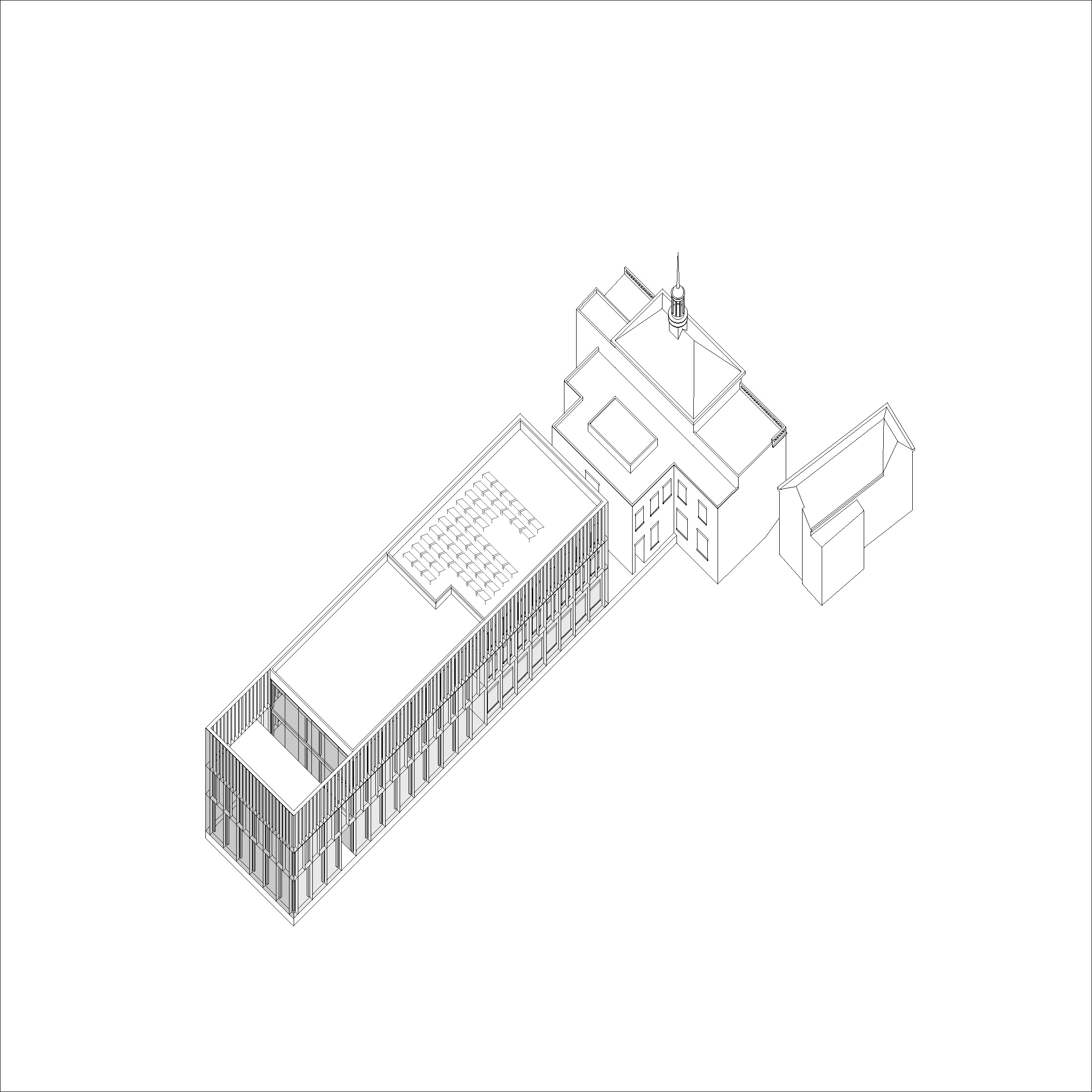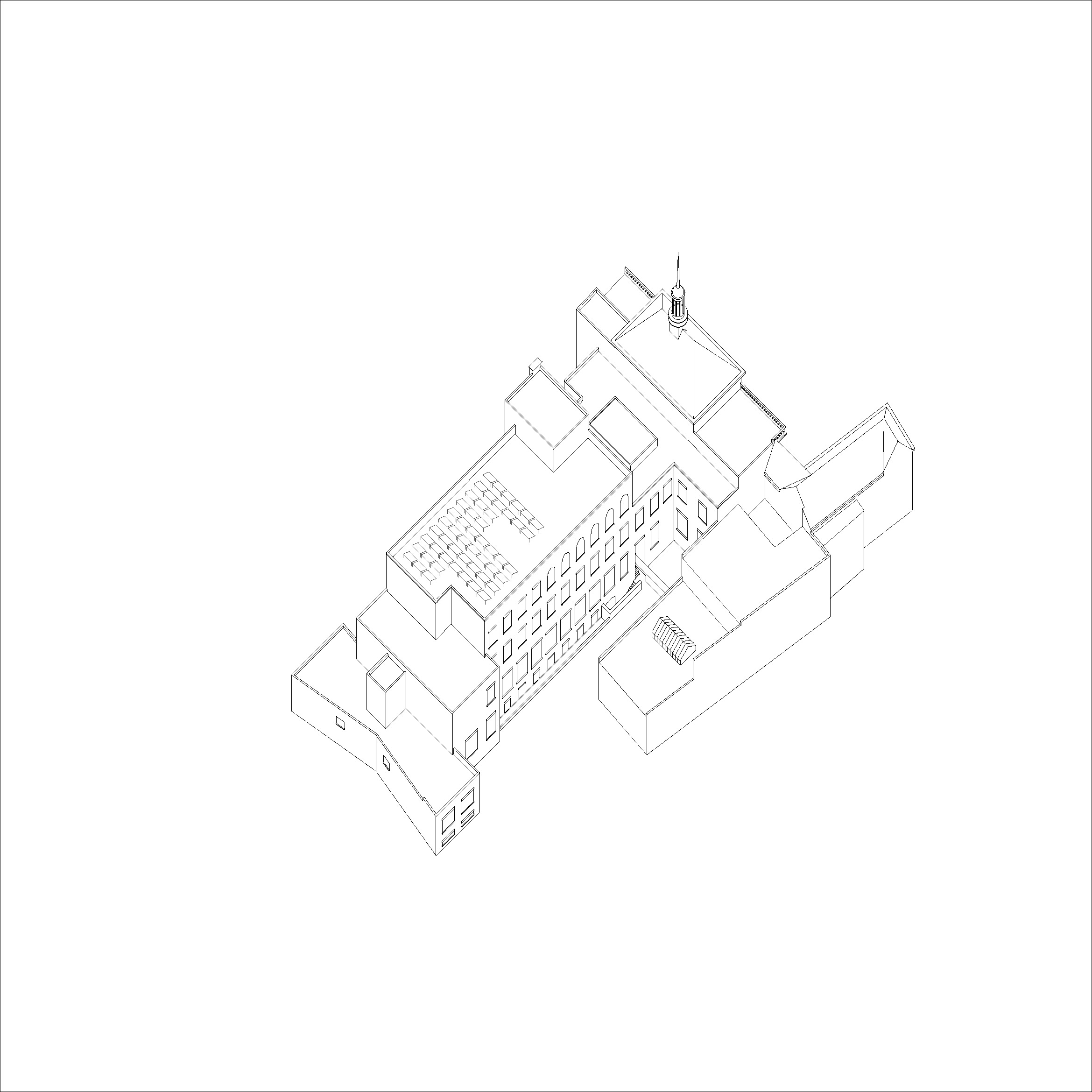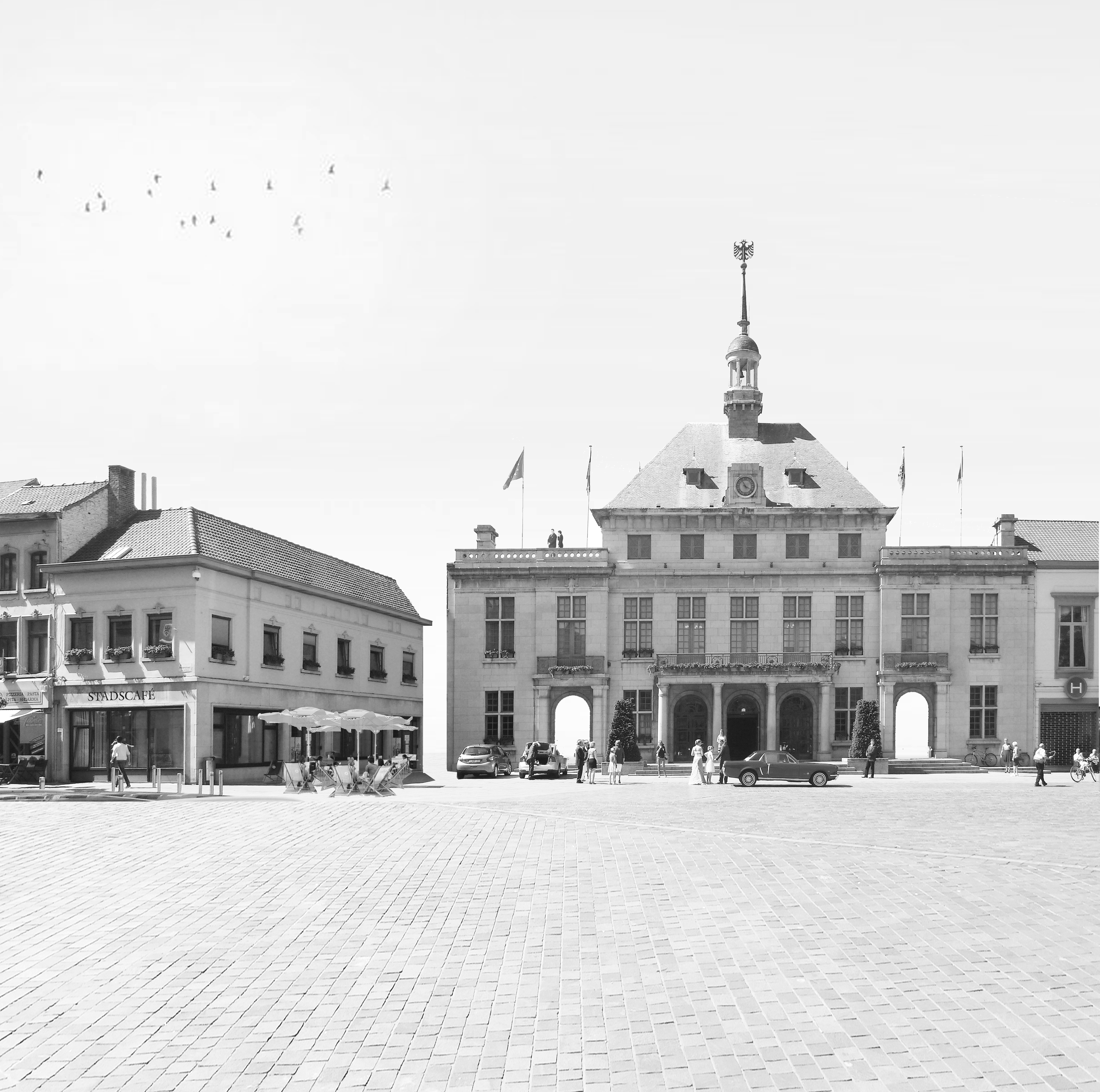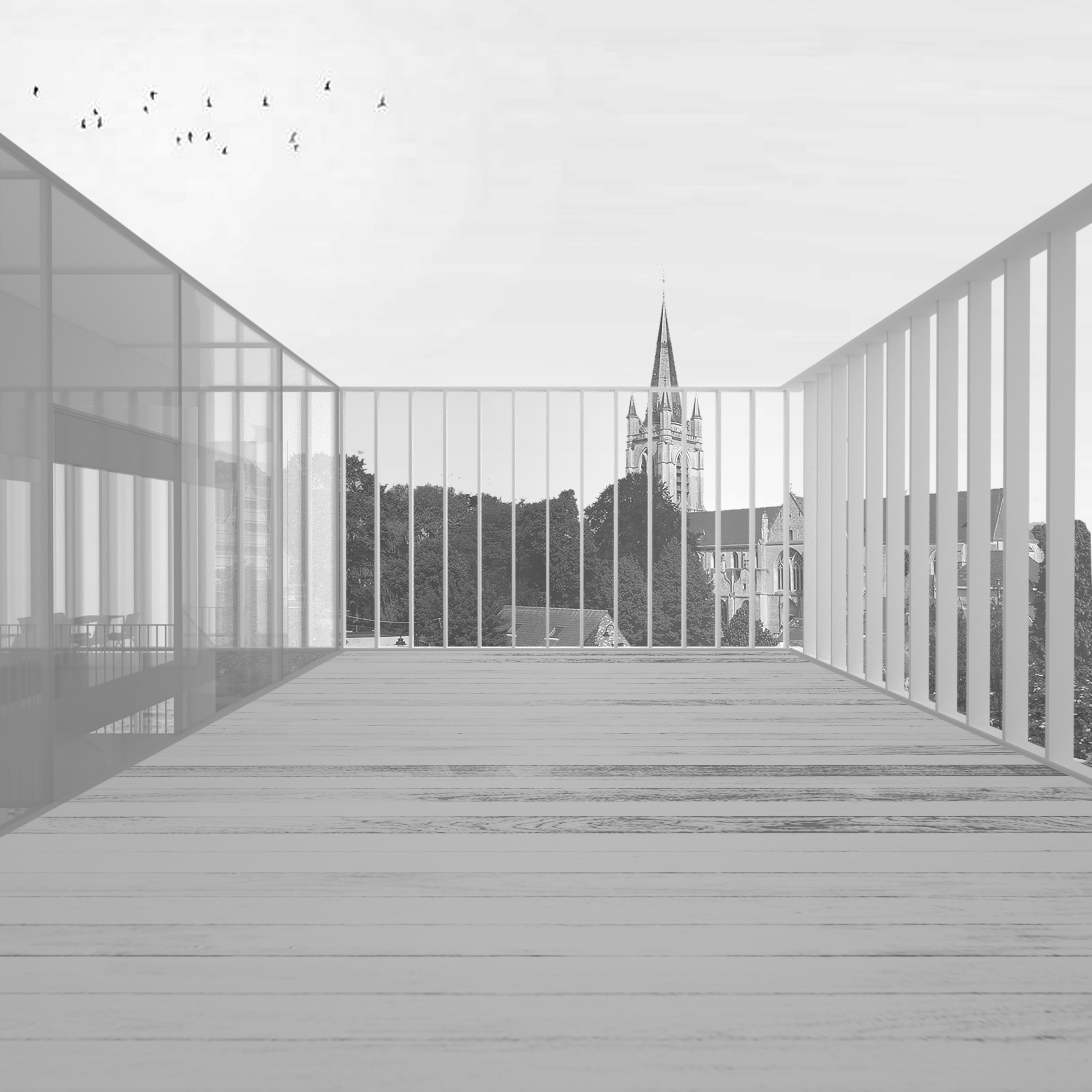The connection between the Grote Markt and the project area 'De Vrijheid', located at the rear of the building, is considered crucial within the framework of an urban renewal project. With a view to creating a transparent Administrative Centre, we aim to use this connection as the central theme of our proposal to effectively link the two parts of the city.
Furthermore, we strive to design an Administrative Centre that is as simple and transparent as possible, without losing sight of sustainability and cost-efficiency.
The current building has developed organically without a clear logic, but it remains in good structural condition. As a basis for the clean and coherent whole we are aiming for, we will return the site to its original state by demolishing all annexes.
The new Administrative Centre will be anchored to the rear of the existing structure, aiming to (re)activate this area and enhance the spatial quality of the current backside. The striking concrete skeleton of the existing building will serve as the foundation for the new extension. This skeleton will be continued in form and layout in the new section, but constructed in timber: laminated, sustainable, FSC-certified wood. The existing building will be doubled in size, resulting in a long, slender structure.
The floors and ceilings in the new section will consist of laminated wooden panels. These self-supporting panels span the distances between structural elements — an innovative, low-cost, and aesthetically pleasing solution.
The council chamber will be housed in a separate volume at the front of the building. Built in the same timber frame construction, it will have a double-height ceiling. This gives the space a stately yet transparent character — exactly what we believe a council chamber should embody. The room will also be prominently positioned: on the ground floor, at the head of the building.
Between these two volumes lies the main entrance, perfectly aligned with the small St. Martensstraat, thus reinforcing its visibility and prominence.
The existing connection between the ceremonial section and the Administrative Centre will be demolished, as we believe these are fundamentally different buildings. On one side, the ceremonial town hall — festive, stately, elevated, and grand — and on the other, the Administrative Centre — more everyday, businesslike, dynamic, accessible, and modest.
Moreover, the freestanding nature of the new Administrative Centre improves orientation and natural light entry, while allowing full insulation around the entire volume.
A vertical wooden slat facade will wrap around both the old and new sections, unifying and enveloping the two structures. This architectural "cloak" prevents overheating and creates a fascinating play of light and shadow within the interior spaces.
The Administrative Centre requires varying degrees of accessibility: reception – consultation areas – meeting rooms – back office. These accessibility layers are translated into the building's facade. A vertical gradation in transparency is achieved by placing the wooden slats closer together as the building rises floor by floor.
Around this wooden structure, a second layer of glass is added, creating a double-skin facade. This design ensures that the building is highly efficient, contemporary, and sustainable.
